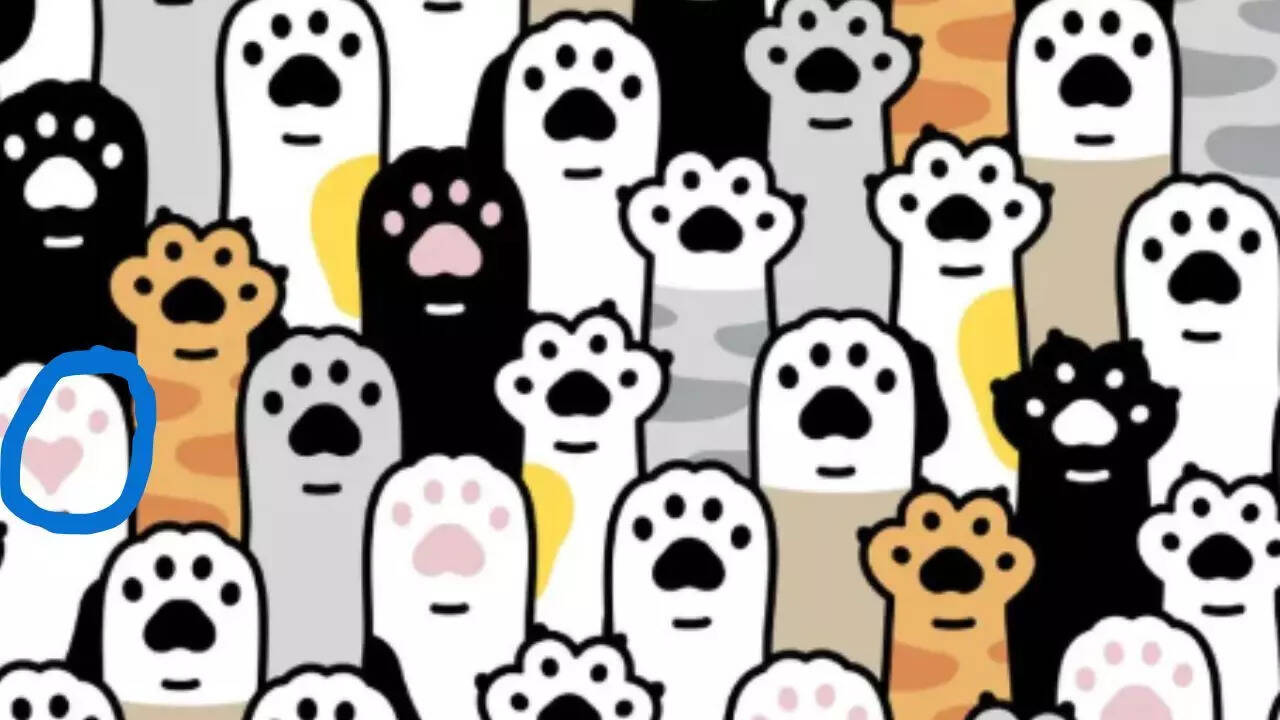Have you ever stared at an image, searching desperately for something that seems impossible to find, only to have it suddenly pop out at you like magic? Welcome to the fascinating world of optical illusions and visual puzzles! These brain-teasing challenges aren’t just fun entertainment – they’re actually giving your mind a serious workout.
What Makes Optical Illusions So Captivating?
Optical illusions work by exploiting the way our brains process visual information. When you look at a complex pattern – like trying to spot a hidden heart among dozens of similar shapes – your brain has to work overtime to distinguish between relevant and irrelevant information. This process engages multiple cognitive functions simultaneously, making it both challenging and rewarding.
The human brain processes visual information incredibly quickly, scanning about 30,000 bits of information per second. However, when faced with camouflaged or hidden objects, this usually efficient system gets a real workout. Your brain must slow down, focus, and methodically analyze each element in the image.
Hidden Heart Optical Illusion Can You Spot It Fast Enough?
The Science Behind Visual Search Tasks
When you’re hunting for that hidden object, several fascinating processes occur in your brain:
Pattern Recognition: Your visual cortex immediately begins identifying familiar shapes and patterns. This is why finding a heart shape among cat paws can be so challenging – both shapes share similar curves and proportions.
Attention Filtering: Your brain must filter out distracting elements while maintaining focus on the target. This selective attention skill improves with practice.
Memory Comparison: Your mind constantly compares what you’re seeing with stored memories of the target object, helping you recognize it when found.
Types of Hidden Object Challenges
| Challenge Type | Difficulty Level |
|---|---|
| Color Variations | Beginner |
| Shape Camouflage | Intermediate |
| Pattern Blending | Advanced |
| Size Differences | Expert |
Different types of visual puzzles offer varying levels of difficulty. Some hide objects through color similarity, while others use shape manipulation or size variations to create the illusion.
Why 7 Seconds Matters in Visual Challenges
The 7-second timeframe isn’t arbitrary – it’s based on cognitive research about optimal attention spans for visual search tasks. Studies show that most people can maintain peak concentration for brief bursts of 5-10 seconds before their attention begins to waver.
This time constraint adds an element of pressure that actually enhances the cognitive benefits. When you’re racing against the clock, your brain engages what scientists call “focused attention mode,” leading to improved:
- Visual processing speed
- Concentration abilities
- Problem-solving skills
- Mental agility
The Hidden Benefits of Visual Perception Training
Regular engagement with optical illusions and hidden object games provides surprising benefits beyond mere entertainment. Let’s explore how these seemingly simple activities can boost your cognitive performance.
Enhanced Focus and Concentration
In our distraction-filled world, the ability to maintain focus is increasingly valuable. Visual puzzles train your brain to ignore irrelevant information while honing in on specific targets. This skill transfers to real-world situations, helping you stay focused during important tasks.
Improved Problem-Solving Abilities
Each hidden object challenge is essentially a mini problem-solving exercise. Your brain learns to approach complex visual information systematically, developing strategies that apply to other analytical tasks in daily life.
Stress Relief and Mental Relaxation
Despite the challenge involved, many people find optical illusions deeply relaxing. The focused attention required creates a meditative state similar to mindfulness practices, providing a mental break from everyday worries.
How to Master Hidden Object Challenges
Strategy 1: Systematic Scanning
Instead of randomly searching the image, develop a systematic approach. Start from one corner and methodically scan across the entire image in a grid pattern. This prevents you from missing areas or repeatedly checking the same spots.
Strategy 2: Use Peripheral Vision
Sometimes, the hidden heart or target object becomes more visible when you’re not looking directly at it. Try focusing on one area while allowing your peripheral vision to detect anomalies in surrounding regions.
Strategy 3: Change Your Perspective
If you’re struggling to find the hidden object within 7 seconds, try adjusting your viewing angle or distance from the screen. Sometimes a slight change in perspective reveals what was previously invisible.
Strategy 4: Take Breaks
Visual fatigue can significantly impact your performance. If you’ve been searching for more than 30 seconds without success, take a brief break and return with fresh eyes.
The Psychology Behind Why We Love These Challenges
Optical illusions tap into fundamental aspects of human psychology. The satisfaction of finally spotting that hidden heart triggers a release of dopamine – the same neurotransmitter associated with rewards and achievements.
This neurochemical response explains why visual puzzles can be somewhat addictive. Each successful discovery reinforces the behavior, encouraging you to seek out more challenges.
Social and Competitive Elements
Hidden object challenges often become social activities. Sharing puzzles with friends or family members creates a collaborative problem-solving environment that strengthens relationships while exercising cognitive abilities.
The competitive aspect – trying to beat that 7-second target – adds excitement and motivation that purely solo activities might lack.
Creating Your Own Visual Challenges
Understanding how optical illusions work empowers you to create your own puzzles. Simple techniques include:
Color Matching: Hide objects by making them similar in color to their surroundings Shape Blending: Camouflage targets among similar shapes Size Variation: Use unexpected sizing to make objects harder to detect Pattern Integration: Incorporate hidden elements seamlessly into background patterns
Digital vs. Traditional Optical Illusions
While digital visual puzzles offer interactive features and immediate feedback, traditional paper-based illusions provide different benefits. Digital versions can include timers, scoring systems, and progressive difficulty levels, while physical puzzles encourage deeper, more contemplative engagement.
Both formats contribute to cognitive development and provide entertaining mental exercise.
Age-Appropriate Visual Perception Training
Optical illusions benefit people of all ages, but different age groups may prefer different complexity levels:
Children (Ages 5-12): Simple shape recognition and color differentiation challenges Teenagers (Ages 13-18): Complex pattern recognition and timed challenges
Adults (Ages 19-65): Multi-layered puzzles with various difficulty elements Seniors (65+): Moderate complexity challenges that maintain cognitive sharpness

Frequently Asked Questions
Q: How often should I practice optical illusion challenges?
A: 10-15 minutes daily provides optimal cognitive benefits without causing visual fatigue.
Q: Can these puzzles actually improve my eyesight?
A: While they won’t correct vision problems, they can enhance visual processing and pattern recognition skills.
Q: Are there any risks to doing too many visual puzzles?
A: Extended sessions may cause eye strain, so take regular breaks every 20-30 minutes.
Hidden Dog Optical Illusion Baffles the Internet Can You See It?

